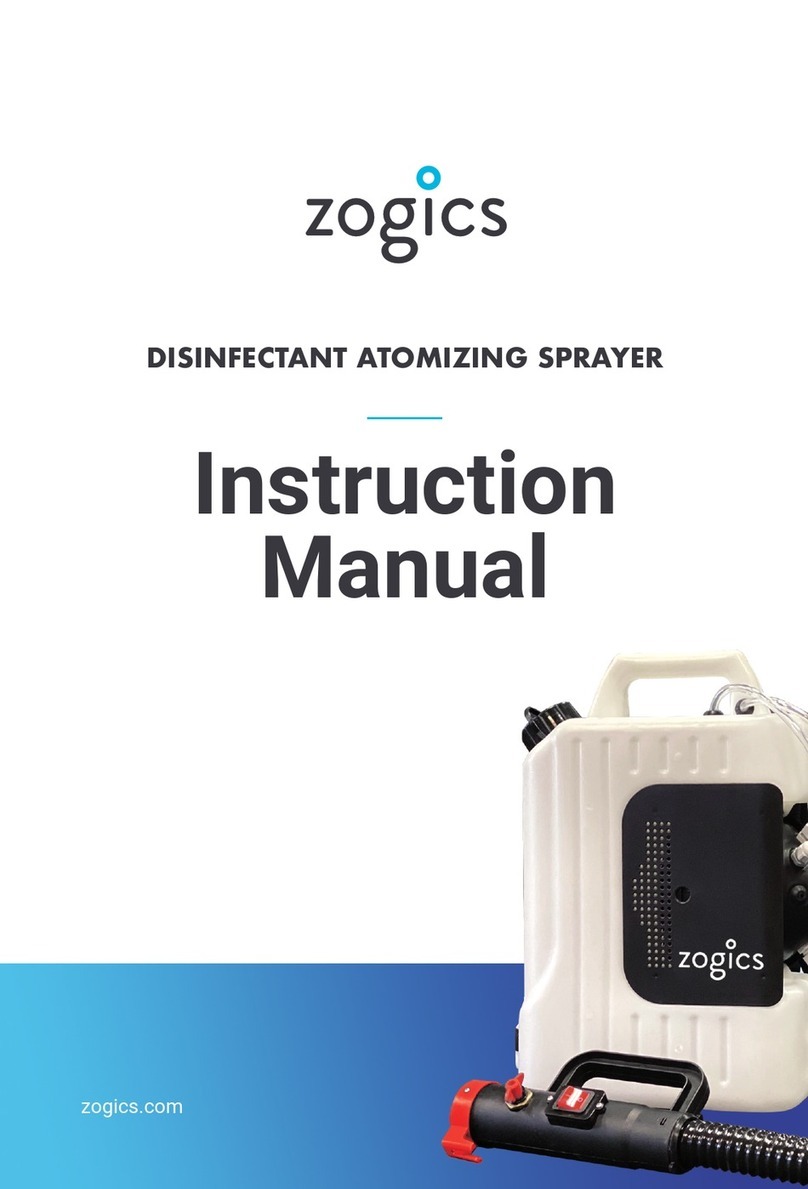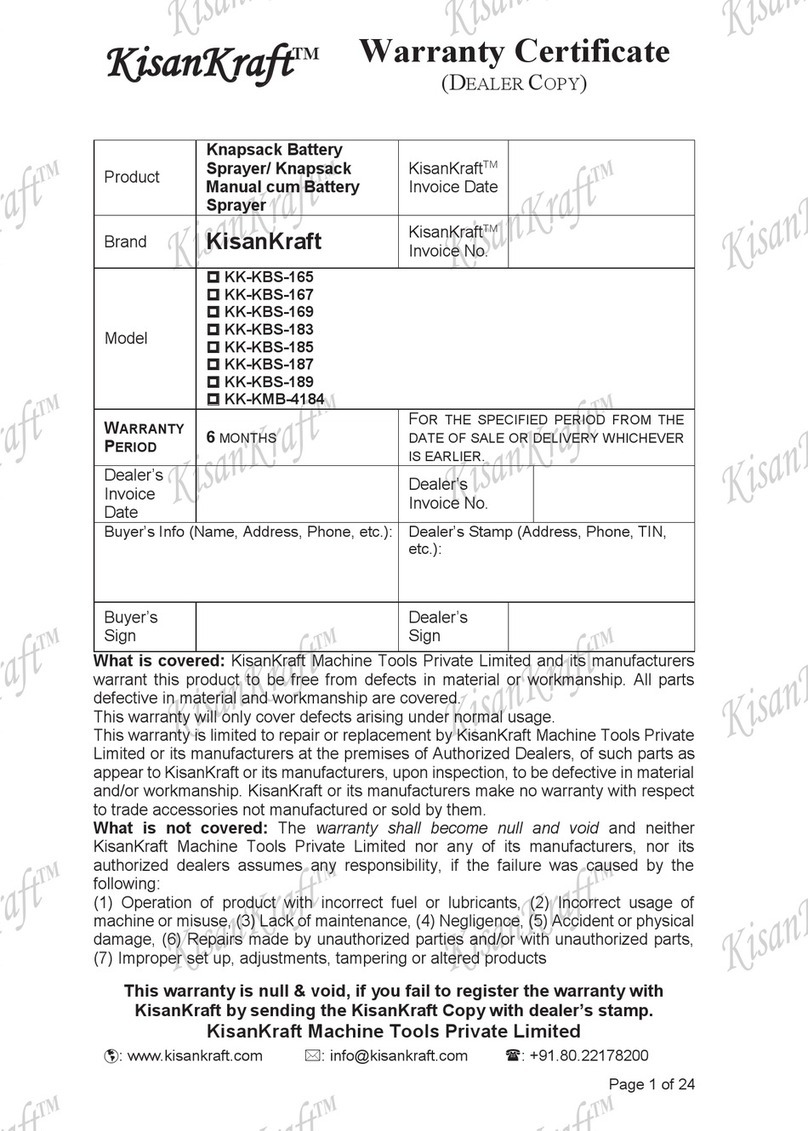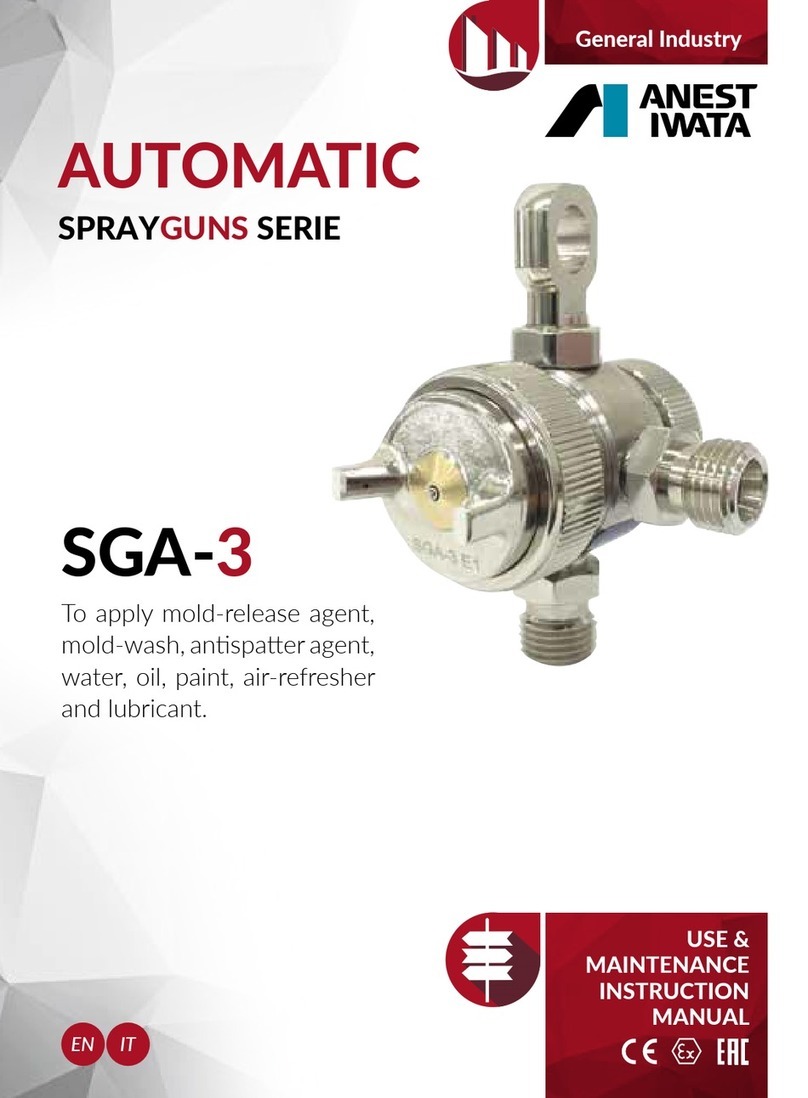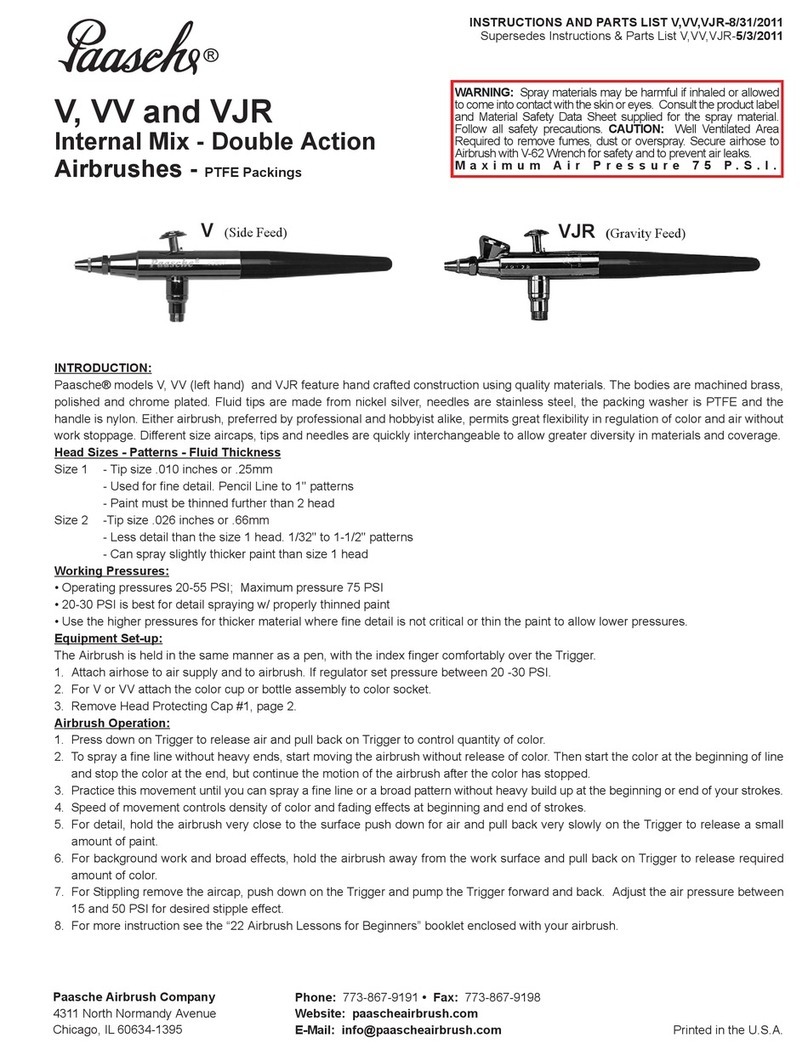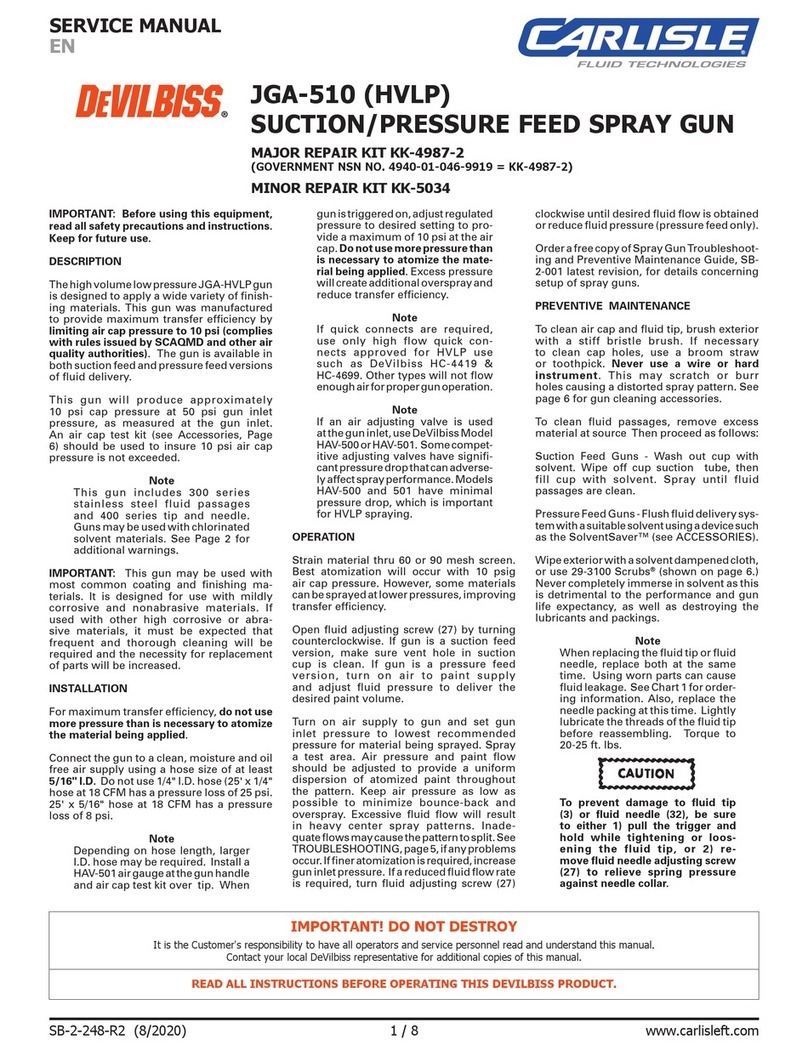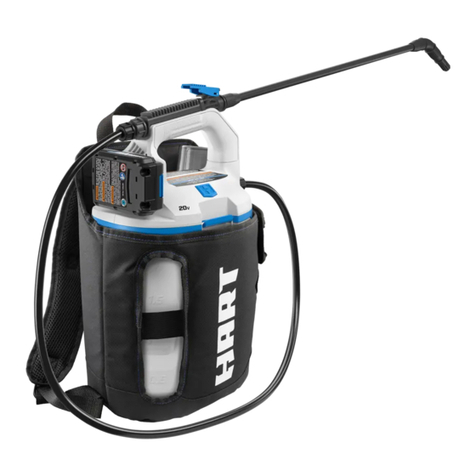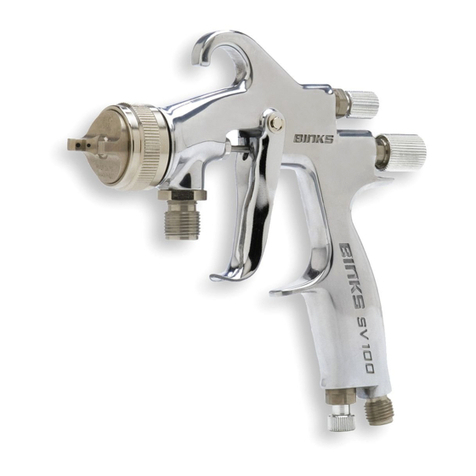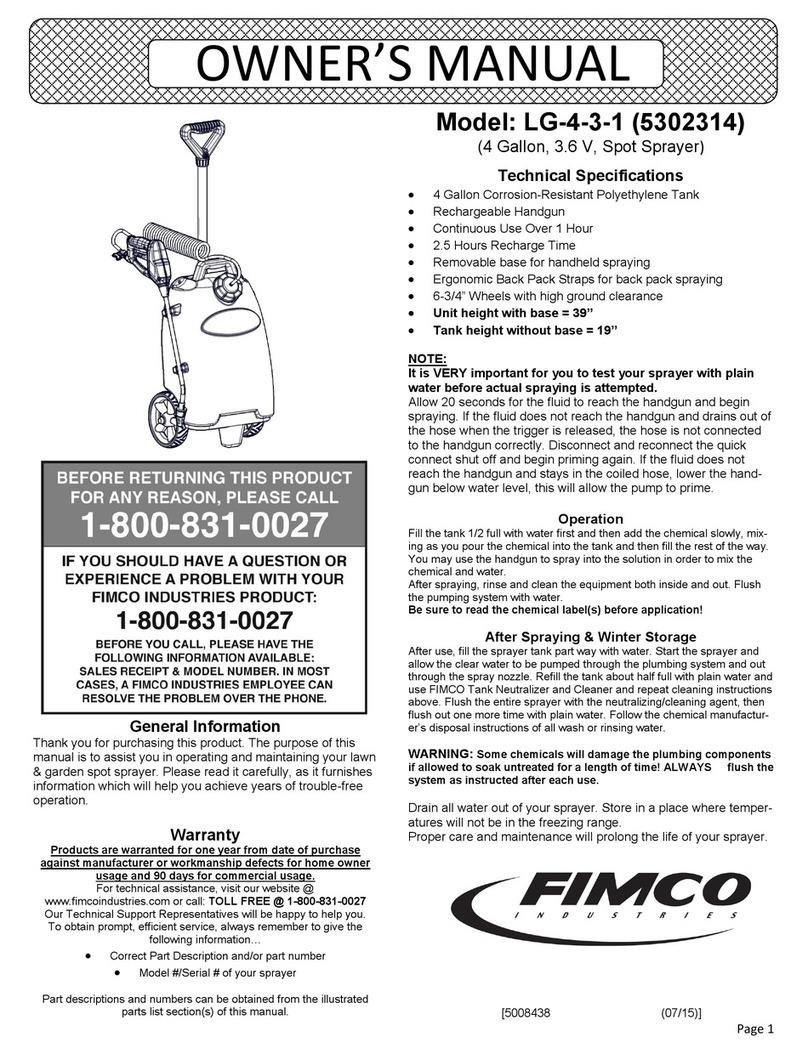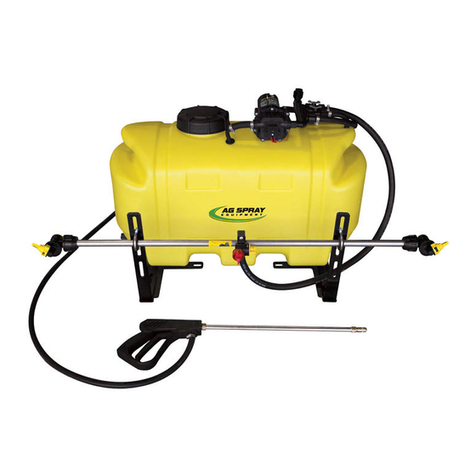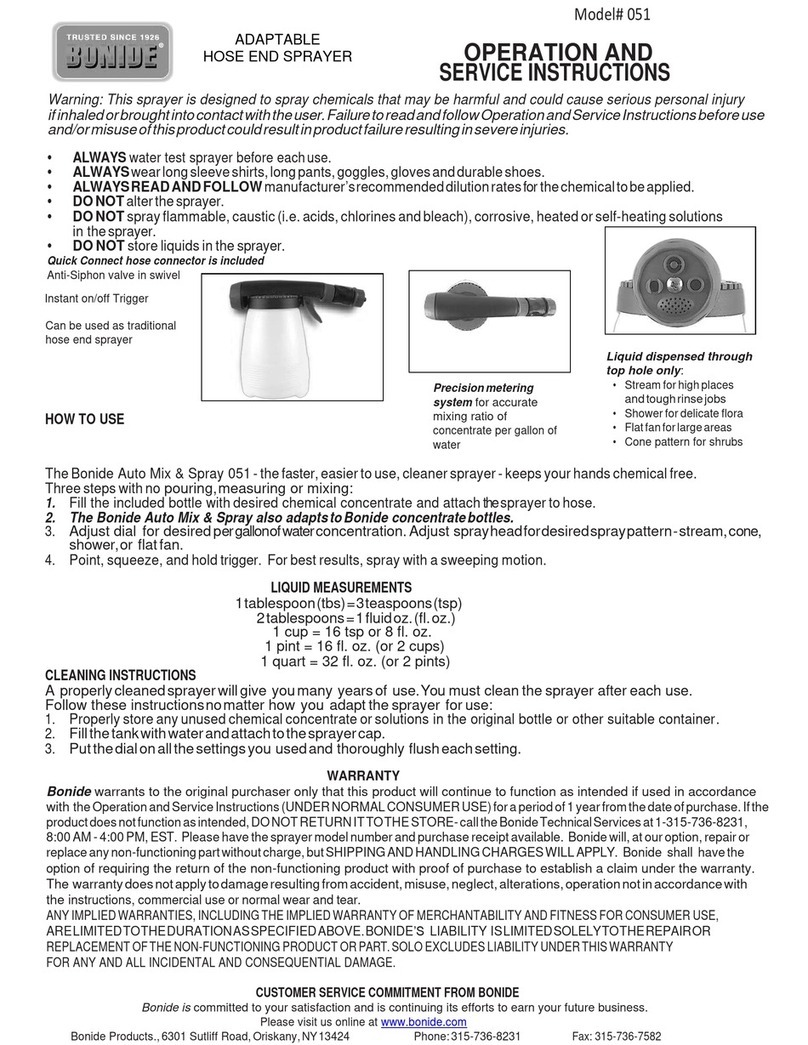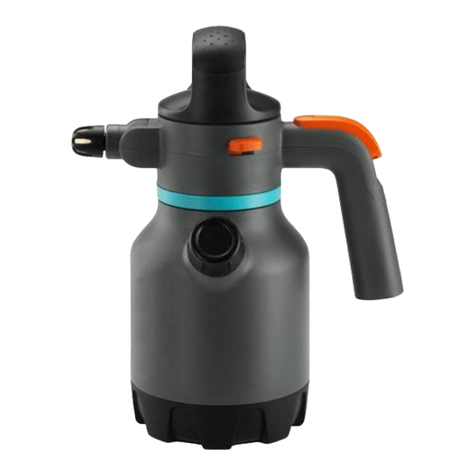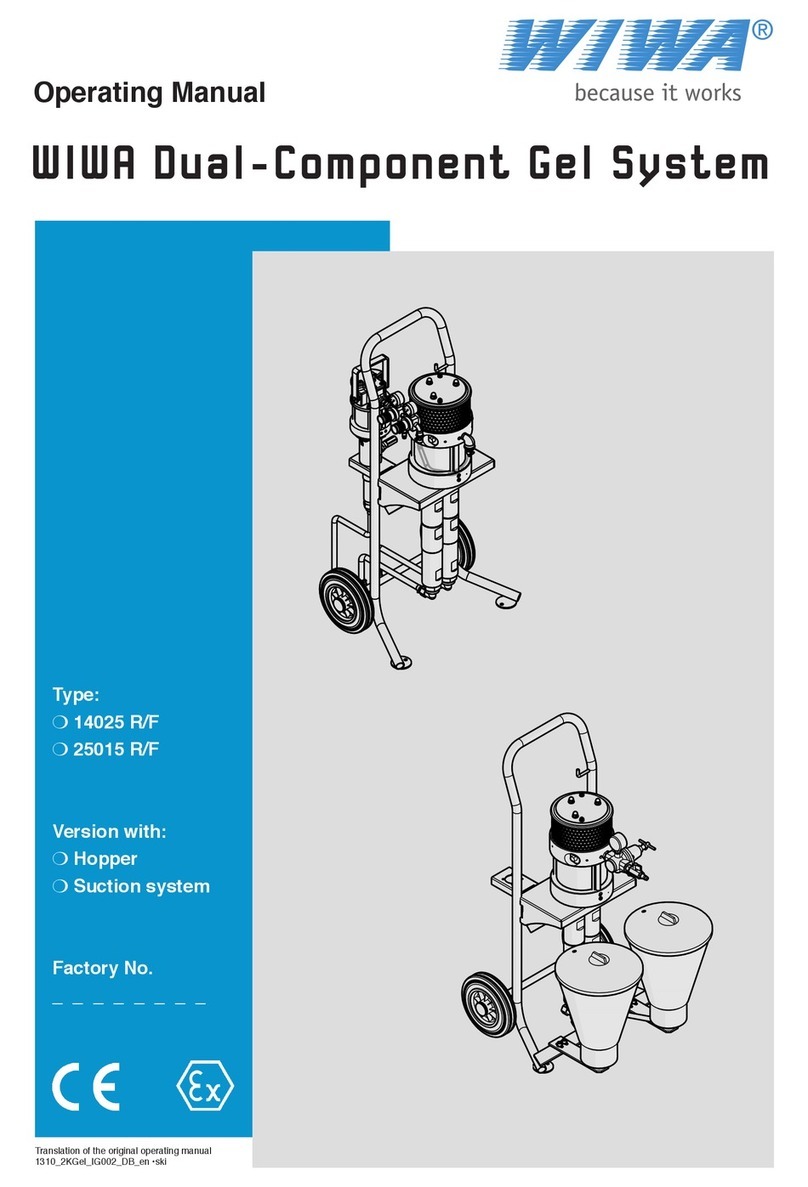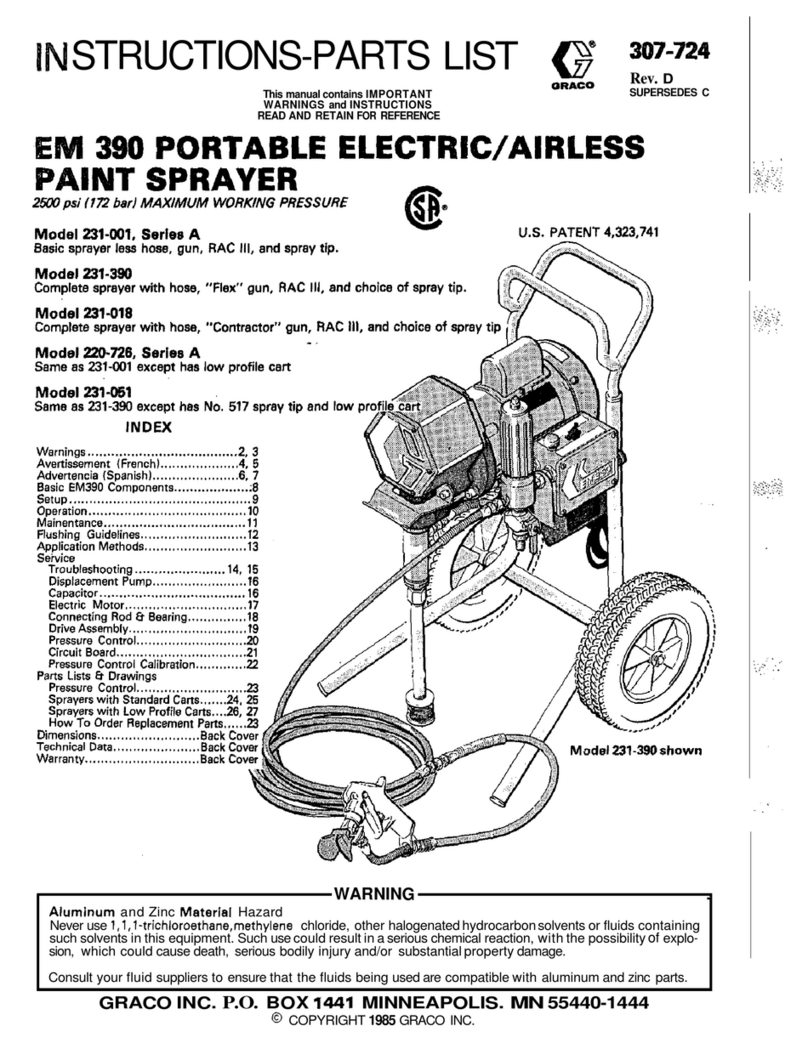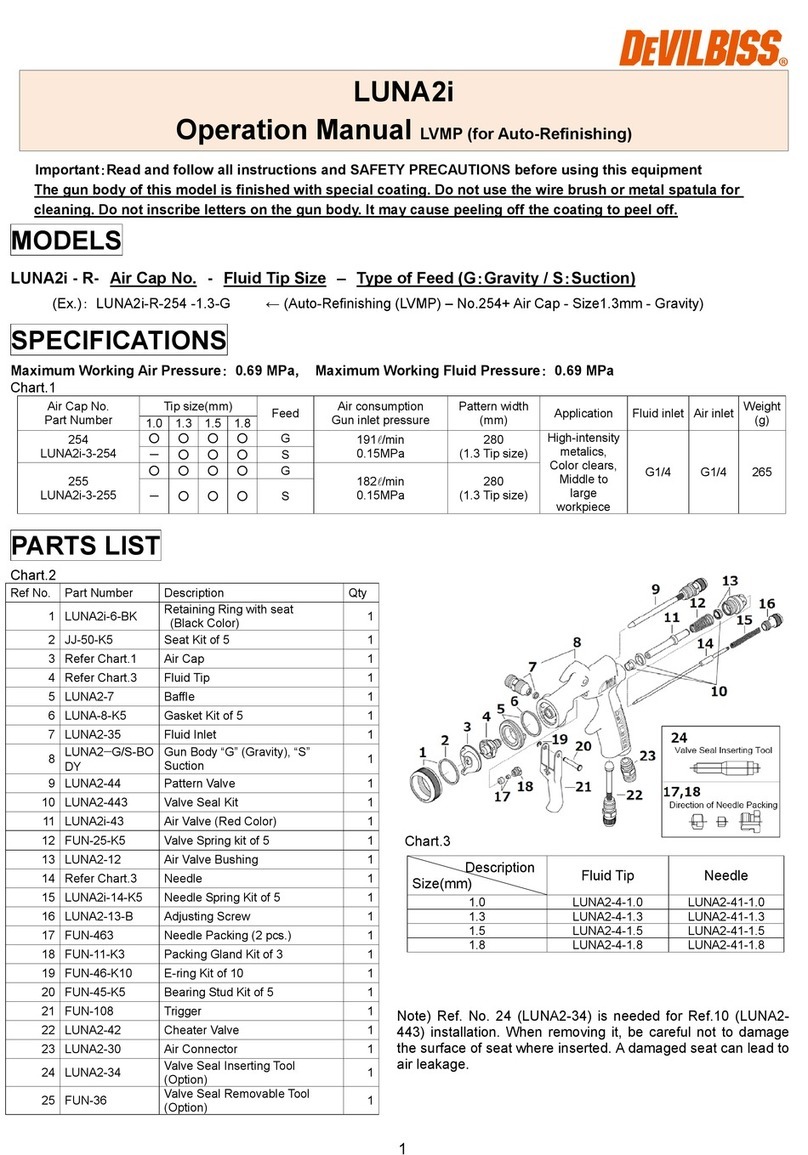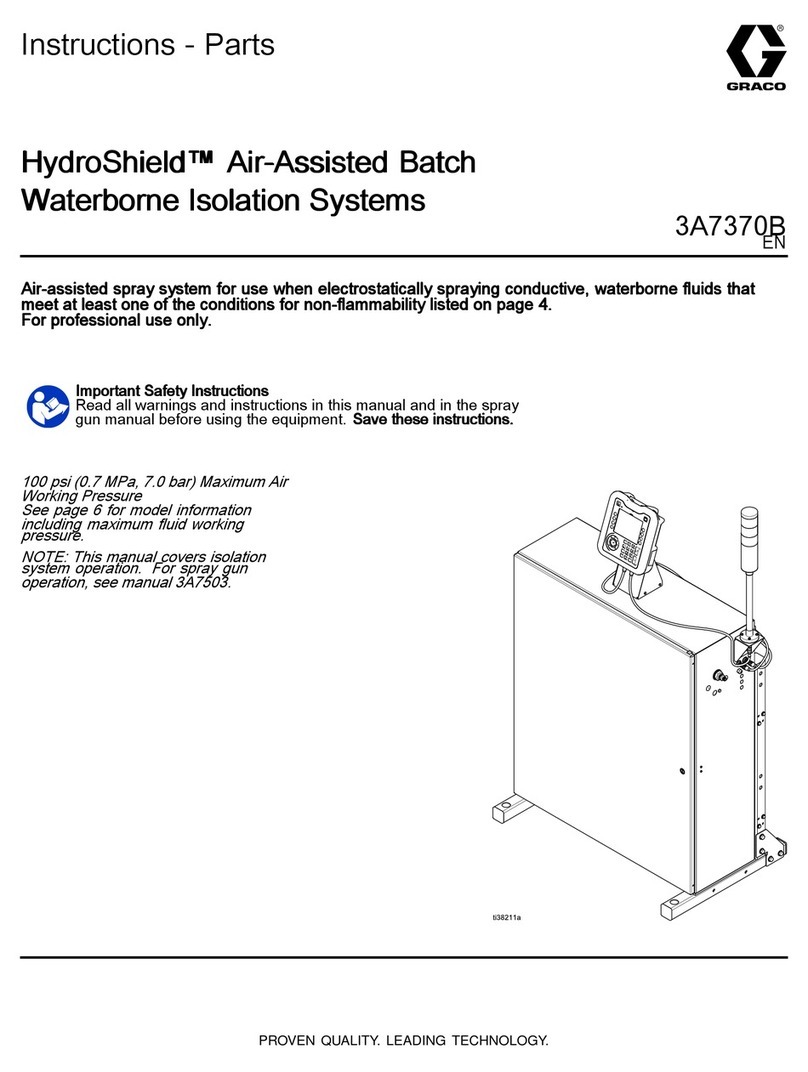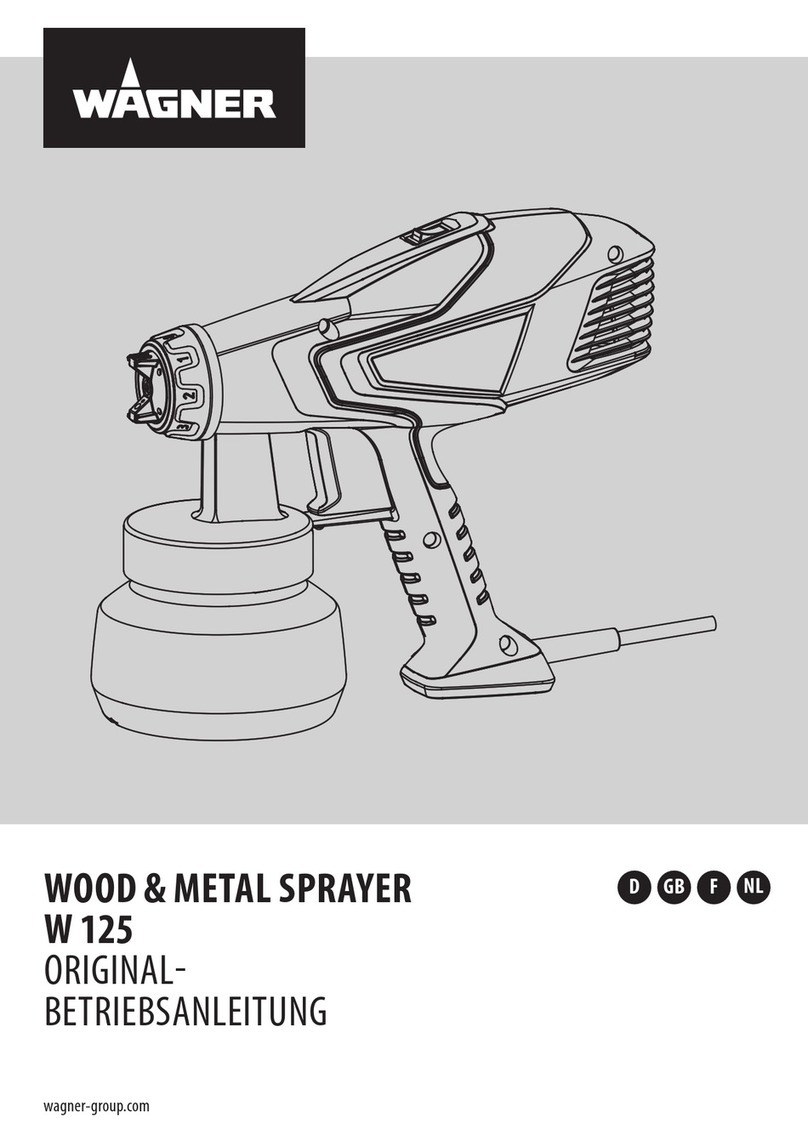
2 – English
WARNING:
READ THESE INSTRUCTIONS. Failure to follow all
instructions listed below, may result in electric shock,
fireand/orseriouspersonalinjury.
READ ALL INSTRUCTIONS BEFORE USING
APPLIANCE
Know your chemical sprayer. Read and understand
the operator’s manual and observe the warnings and
instructionlabelsaffixedtothetool.
Do not operate the product in explosive atmospheres,
such as in the presence of flammable liquids, gases
or dust. Powertoolscreatesparkswhichmayignitethe
dustorfumes.
Do not allow bystanders or children in the area while
operating this product. Exposure to some chemicals
canbehazardous.
This product is suitable for indoor and outdoor use.
Do not expose power tools to rain or wet conditions.
Water entering a power tool will increase the risk of elec-
tricshock.
Stay alert, watch what you are doing and use common
sense when operating this product. Do not use while
you are tired or under the influence of drugs, alcohol
or medication. Amomentofinattentionwhileoperating
thisproductmayresultinseriouspersonalinjury.
Dress properly. Do not wear loose clothing or jewelry.
Contain long hair. Keep your hair, clothing, and gloves
away from moving parts. Looseclothes,jewelry,orlong
haircanbecaughtinmovingparts.
Use safety equipment. Always wear eye protection
with side shields or goggles and a dust mask. Protect
eyes, skin and lungs against drifting spray and during
mixing,filling,andcleaning.
Do not overreach. Keep proper footing and balance at
all times. Do not use on a ladder or unstable support.
Stable footing on a solid surface enables better control
oftheproductinunexpectedsituations.
Do not use the product if the ON/OFF button does
not turn the unit on and off. Anyproductthatcannot
be controlled with the ON/OFF button is dangerous and
mustberepaired.
Store the product out of the reach of children and do
not allow persons unfamiliar with the product or these
instructions to operate the product.
Keep the sprayer and its handle dry, clean and free
from oil and grease. Always use a clean cloth when
cleaning. Never use brake fluids, gasoline, petroleum-
basedproducts,oranystrongsolventstocleanyourtool.
Following this rule will reduce the risk of loss of control
anddeteriorationoftheenclosureplastic.
Use this product in accordance with these instructions
and in the manner intended, taking into account the
working conditions and the work to be performed.
Use of the product for operations different from those
intendedcouldresultinahazardoussituation.
Avoid accidental starting. Ensure the switch is in the
off position before inserting battery pack. Inserting the
batterypackintoproductsthathavetheswitchoninvites
accidents.
Use the product only with specifically designated bat-
tery packs. Use of any other battery packs may create
ariskofinjuryandfire.
Use this product only with batteries and chargers
listed in tool/appliance/battery pack/charger correla-
tion supplement 995000850.
When battery pack is not in use, keep it away from
other metal objects like paper clips, coins, keys, nails,
screws, or other small metal objects that can make a
connection from one terminal to another. Shorting the
batteryterminalstogethermaycauseburnsorafire.
Under abusive conditions, liquid may be ejected from
the battery, avoid contact. If contact accidentally
occurs, flush with water. If liquid contacts eyes, ad-
ditionally seek medical help. Liquidejectedfromthe
batterymaycauseirritationorburns.
Have this product serviced by a qualified repair person
using only identical replacement parts. This will ensure
thatthesafetyofthepowertoolismaintained.
When servicing the product, use only identical re-
placement parts. Follow instructions in the Mainte-
nance section of this manual. Useofunauthorizedparts
or failure to follow Maintenance instructions may create
ariskofshockorinjury.
Do not let familiarity gained from frequent use of tools
allow you to become complacent and ignore tool
safety principles. Acarelessaction cancausesevere
injurywithinafractionofasecond.
IMPORTANT SAFETY INSTRUCTIONS
